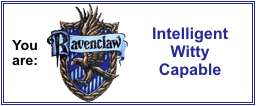Alice in Wonderland
IAN STEWART
Globe and Mail
September 20, 2008
In 1862, two clergymen took three little girls for a trip along the river Thames in a rowing-boat. The Reverend Charles Lutwidge Dodgson was a mathematics lecturer at Christ Church College and Robinson Duckworth was a fellow of Trinity College, both in Oxford. Lorina, Alice and Edith were the daughters of Henry Liddell, dean of Christ Church. To stop the children becoming bored, Dodgson invented a complicated and fanciful tale about a bored little girl called Alice who had a series of adventures.
The story was a hit, and Alice asked Dodgson to write it down. Two years later he did, and sent it to her. A year after that, a much-expanded version appeared in print under the pseudonym Lewis Carroll. The book was Alice's Adventures in Wonderland, still a firm favourite, and not just with children.
Alice has a timeless appeal, with its surreal characters, fantastic story and quirky events. Alice, sitting on a riverbank, notices a white rabbit. When it takes a watch out of its waistcoat — which she does find a little strange — she follows it down a large rabbit-hole, into Wonderland.
The book was illustrated by John Tenniel, based on Dodgson's sketches, and the illustrations have become an integral part of the book — so much so that even the Disney animated version felt obliged to follow Tenniel's model.
I first came across Alice when my parents took me to see the movie, about 55 years ago, and I have vivid recollections of the caterpillar puffing enormous clouds of smoke, and — it's amazing what sticks — a rocking-horse fly. Which comes from Through the Looking-Glass, the sequel. Alice seems even more surreal nowadays, because we moderns don't always spot the allusions.
The Dodo in the caucus race is Dodgson himself; the Duck is the Reverend Duckworth. The lory is Lorina, the eagle Edith — and Alice is Alice. The rabbit-hole was the back stairs of the main hall of Christ Church College. The verse consists almost entirely of parodies of poems that Victorian children had to learn by heart.
"Tis the voice of the lobster: I heard him declare: 'You have baked me too brown, I must sugar my hair'." This is a parody of The Sluggard by Isaac Watts, a prominent writer of hymns.
Acres of print have been devoted to the enigma of what makes Alice so special. It can hardly be the story, which rambles from incident to incident with very little clear plot. Alice has a remarkable dreamlike quality — a "stream of unconsciousness" in which events merge into each other, and while each on its own makes a strange sort of sense, there is no overall logic.
Is it the characters? Scarcely a page turns without a new and even more fantastic creature emerging, and the most fantastic of them all must be the Cheshire Cat, which disappears except for its grin. The March Hare and the Mad Hatter are charmingly crazy, the Mock Turtle tugs at your heartstrings, but in such a short book there isn't room to flesh out the characters in the way of, say, Mole in The Wind in the Willows. Carroll's characters play cameo roles. We don't get to know them.
Is it the humour? The book is laden with puns, the parodies make us smile and there is some marvellous slapstick, like the dormouse being stuffed into the teapot. But Alice is not a comedy. (Maybe it is) The pictures? The combination of text and images is powerful and effective, and in Tenniel's hands, Carroll's sketches transcend their origins.
I think it's all of these, and none of them.
For a timeless moment, everything came together to create a timeless book. Dodgson wrote other children's books, such as Sylvie and Bruno. None compares remotely to Alice — except Through the Looking-Glass, which captures the same dreamlike quality and fantastic imagination, and may even be better. The Alice books were an impossible act to follo.
Ian Stewart is professor of mathematics at the University of Warwick, in England.
Subscribe to:
Post Comments (Atom)









1 comment:
I have always loved Alice In Wonderland. The Cheshire Cat and the Jabberwocky are my two favorite creations. I think of it as one of the best pieces of fantasy ever written.
Post a Comment